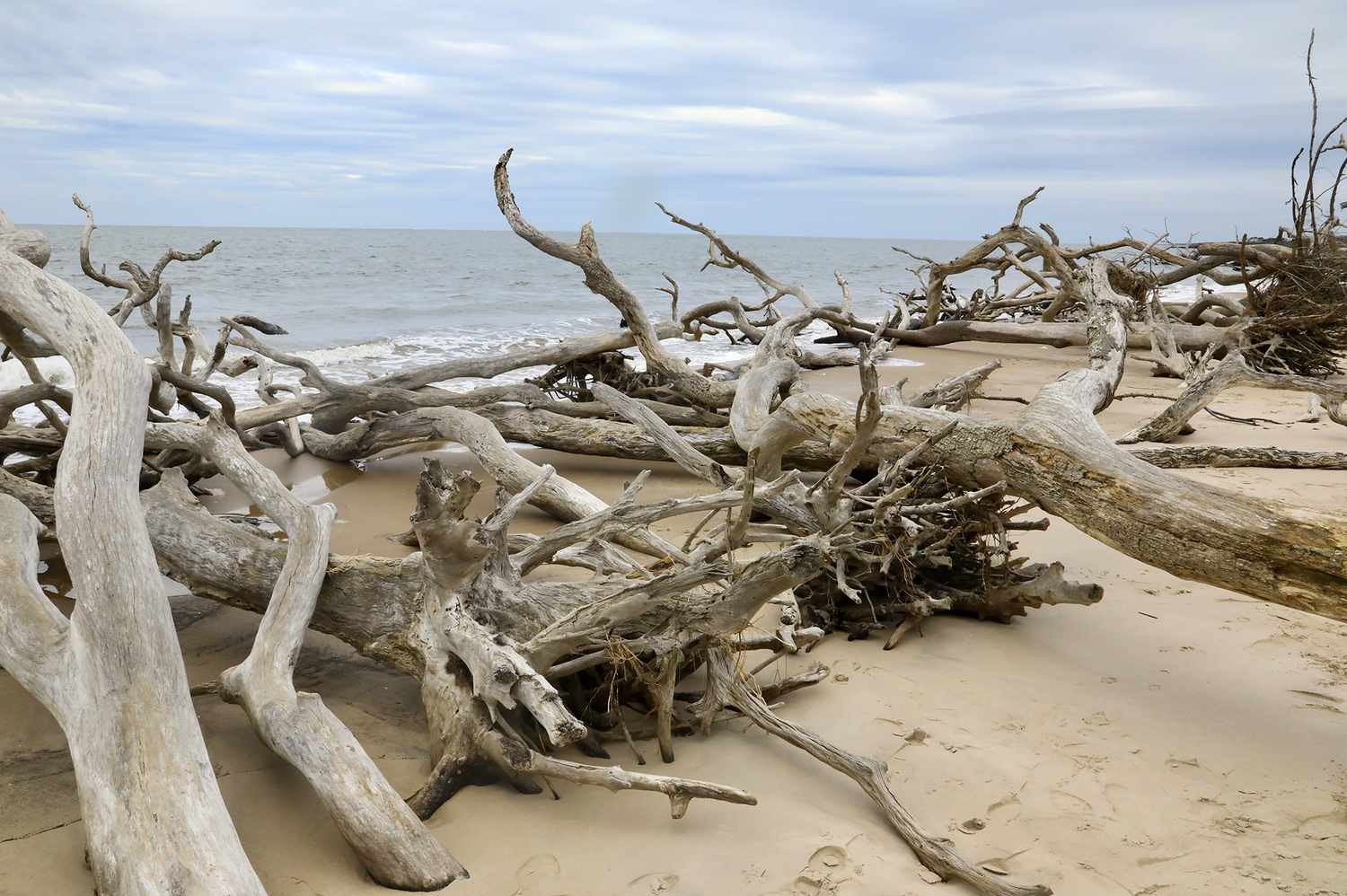:max_bytes(150000):strip_icc():format(jpeg)/TAL-boneyard-beach-big-talbot-island-state-park-florida-BONEYARDBEACH0925-f04b78fb694347f1bccd6cd2cef604e1.jpg)
Florida’s beaches are legendary. You have those with pristine sugar-white sand and bright blue waters, and others are known for rugged, wild nature. The most popular beaches for swimming and lounging are dotted with brightly colored umbrellas and chairs, but there are also those that are a bit more remote and undeveloped. Boneyard Beach in Big Talbot Island State Park, located just outside Jacksonvillefalls into the latter category.
One of the most beautiful places in Florida and one of the state’s “secret beaches,” Boneyard Beach is the type of destination that attracts photographers and nature lovers alike. Enormous driftwood trees are scattered along the shore, producing a scene that’s often compared to an elephant boneyard. It’s quite similar to what you’ll find at Driftwood Beach on Georgia’s Jekyll Island or Boneyard Beach on Bulls Island in South Carolina; all of these slightly eerie, stunning stretches of shore were created by a combination of water, sun, sand, and the passing of time.
As the water channels and sand shifted around Florida’s Boneyard Beach over the last few hundred years, the shoreline retreated and the trees fell. Mainly live oak and cedar trees, the fallen giants endured the sun, sand, and wind, eventually transforming into the bleached, smoothed pieces of art they are today. But they’re not just artifacts to be admired and photographed.
As they lie up and down this 3-mile stretch of shoreline along the Nassau Sound, they play an important role in protecting the Jacksonville area. The driftwood trees help to blunt the effects of hurricanes—and, thus, slow down erosion—on the remaining woods and uplands. If the root systems did not remain in place, the area would be more exposed to sea level rise and the impact of storms.
To see this beautiful sight in person, you’ll need to arrive to Big Talbot Island State Park between 8 a.m. and dusk, prepared to pay the $3 parking fee. From the Bluffs Scenic Shoreline Picnic Area, there’s a roughly half-mile hike down to Boneyard Beach—but you can opt to increase your step count as you walk along the shore. If possible, try to time your visit for low tide, as more of the driftwood will be exposed; you’ll have more room to walk and will likely get better photos.
While it’s a good idea to bring water, a camera, and sunscreen with you, leave your pets at home. According to park manager Michelle WatermanBoneyard Beach is a “critical nesting habitat for sea turtles and shorebirds,” and your dog may scare them away. Swimming is also not recommended; the Nassau Sound has strong currents, and there are no lifeguards present.





